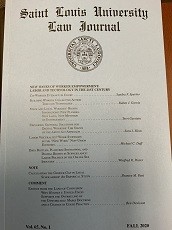Eugene L Berl

Extract
Conclusion
Public hospitals, by reason of the mandate of Roe and Doe, cannot categorically refuse to perform abortions. Similarly, under the state action doctrine, hospitals receiving federal funds pursuant to the Hill-Burton Act cannot refuse to perform abortions, notwithstanding the Health Programs Extension Act of 1973. The inter-relationsip of state and the hospital in the Hill-Burton program, with all the rights, duties and obligations incidental thereto, and the fact that the state and the hospital are joint participants in a state project undertaken for the benefit of the public, support the finding of state action. The Roe prohibition against state interference in a woman’s abortion decision, to be more than a mere cipher, must extend beyond state abortion statutes to the unwarranted refusal to perform abortions by hospitals with which the state is intimately involved.
Berl EL. Hill-Burton Hospitals After Roe and Doe: Can Federally Funded Hospitals Refuse to Perform Abortions? New York U Rev Law & Social Change. 1974;4(1):83-97.



